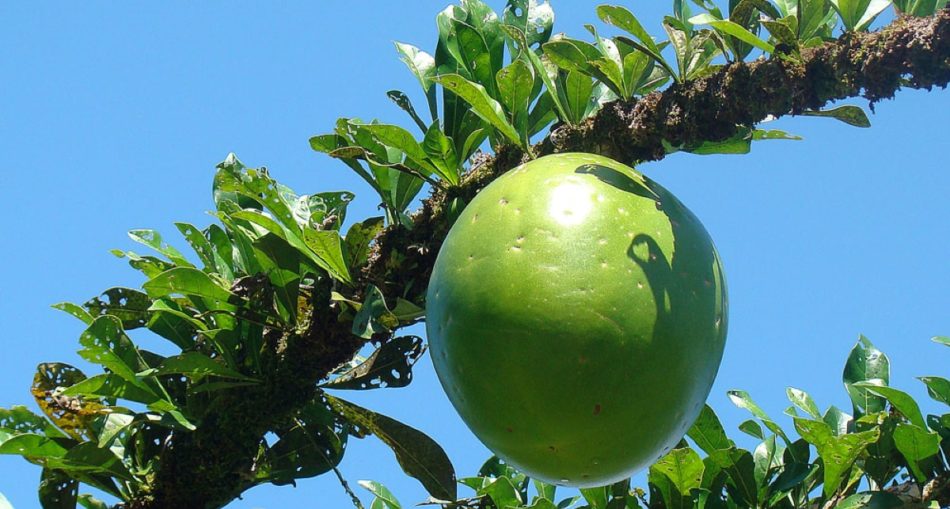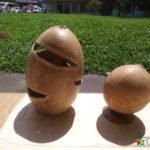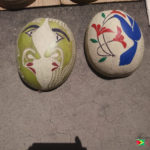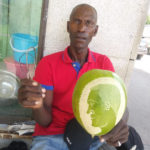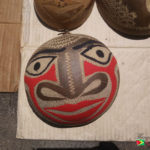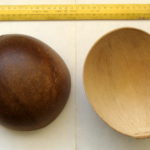Calabash is a household name in Guyana whether you are talking about the tree or the dishes made from it. A long time ago in Guyana, Dutchmen jumbies, baccoos or basically anything scary, apparently lived in these Calabash trees. They also say the ole higue hangs her skin on this tree before heading out to feed. But we can’t really confirm this. Most Guyanese know of the Calabash tree since many “bowls”, “cups” and “basins” were obtained from this tree long ago. The Calabash Tree was among the plants that were first cultivated The scientific name for Calabash is Crescentia cujete but many persons around the world simply call it Calabash.
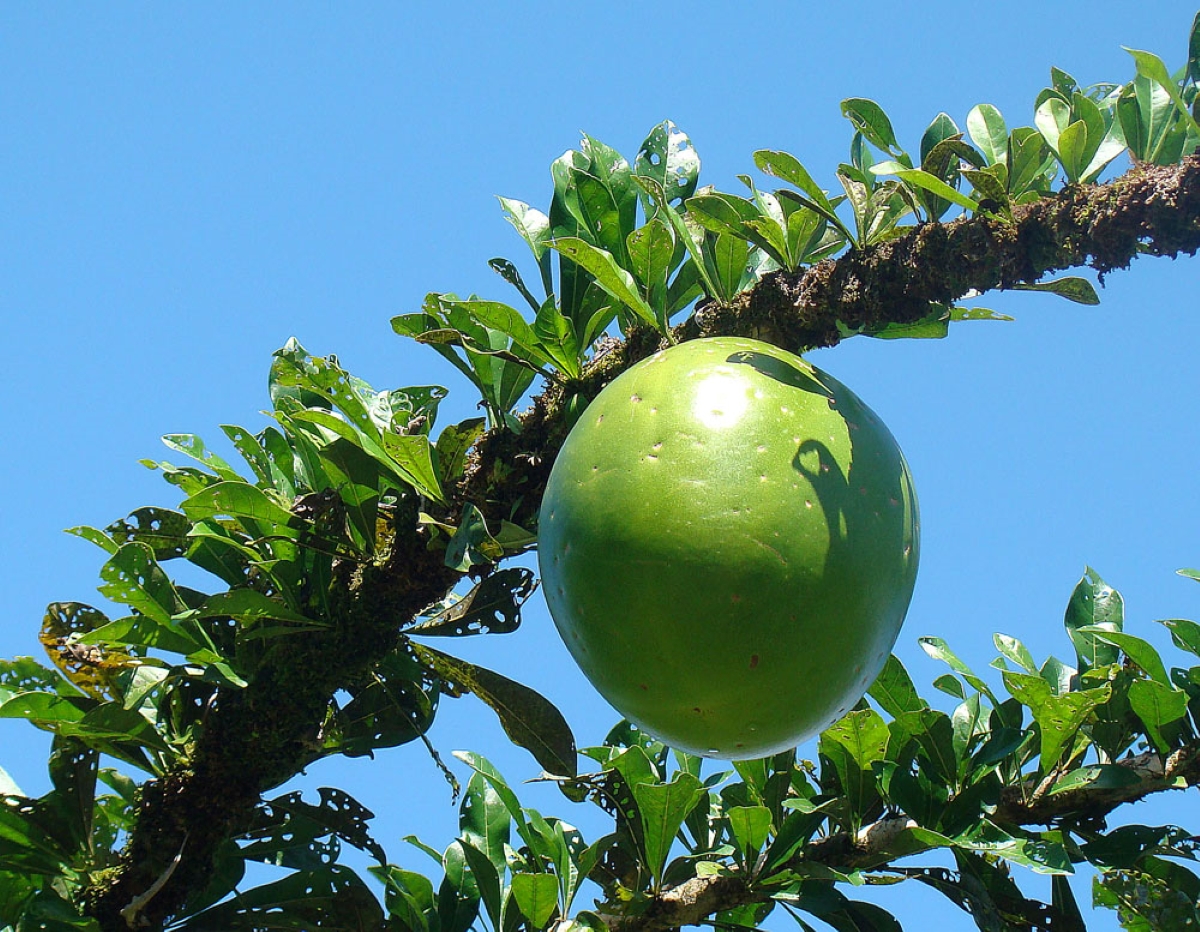
Calabash – Photo by Dick Culbert (https://www.flickr.com/photos/92252798@N07/9257958533)
Origin of Calabash
The Calabash Tree is believed to have originated in Africa. However, it grows in most tropical places around the world in countries like and Guyana and Suriname. These trees also grows in some countries in Central and South America, the West Indies, and even south Florida in the United States of America.
Scientific Classification of Calabash
- Kingdom: Plantae
- Clade: Tracheophytes
- Clade: Angiosperms
- Clade: Eudicots
- Clade: Asterids
- Order: Lamiales
- Family: Bignoniaceae
- Genus: Crescentia
- Species: C. cujete
Description of The Calabash Tree
The Calabash Trees grow up to ten (10) metres tall and can even grow in areas with poor drainage. The truck of the trees are thick with a dense, rounded crown of branches and leaves. The leaves are typically ovate and clustered at the tips of the branches. Flowers are round and bell shaped and light yellowish-brown in colour with flaring lobes and purple insides. They also grow directly on the branches and tree trunks. The most famous part of this tree, the fruits are round and bright green when ripe. The have a woody exterior and contains a foul smelling pulp.
Uses of The Calabash Tree
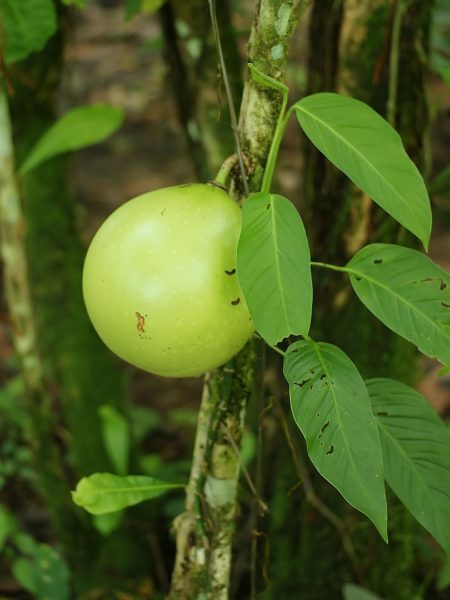
Calabash Fruit – Photo By © Hans Hillewaert, CC BY-SA 3.0, https://commons.wikimedia.org/w/index.php?curid=7967048
- The leaves are used to make soup.
- Bark can be used to clean wounds.
- The cooked seeds of the Calabash trees are used to make beverage but are poisonous if eaten raw. When mixed with roasted wheat they can be substituted for coffee.
- The wood from the trees are used to make handles for tools and ox yokes and can also be used for fuel.
- Young Calabash fruit are sometimes pickled but the pulp is poisonous.
-
The juice of the Calabash fruit is used to treat diarrhoea, pneumonia and intestinal irregularity and can eliminate blood clots to improve menstrual flow. The juice can also be brewed into a tea and used to induce abortion or childbirth.
- The fruits are dried and pulp is removed to make a wide range of dishes like bows, cups and basins.
- Dry fruits are used to make ornaments and are decorated with paintings and carvings and used as containers.
- Musical instruments like the maracas and guiro were made from the shells.
Interesting Tip
- The flowers of the Calabash Tree are pollinated by bats.
- Crescentia cujete or Calabash Tree is the national tree of St. Lucia.
- Calabash seeds are used to make a syrup and popular confection called ‘carabobo’.
- A Lamp Shade
- Decorated Calabash
- Danial Ramiah Posing with his work
- The Calabash DIsh – Photo By Fev – Own work, Public Domain, https://commons.wikimedia.org/w/index.php?curid=9426305
How to make a Calabash Dish
A calabash bowl is easy to make and can be used as a basin or even a cup!
Materials
- 1 Calabash Fruit
- Hand Saw
Method
- Make a halfway mark on the fruit and neatly slice it in half.
- Scrape out the inedible flesh/pulp.
- Wash fruit, ensuring no pulp is left inside.
- Put to dry in the sun.
- Enjoy your new handmade bowl, basic or drinking mug.
Optional: The Calabash fruit can be dried and then made into the dish.
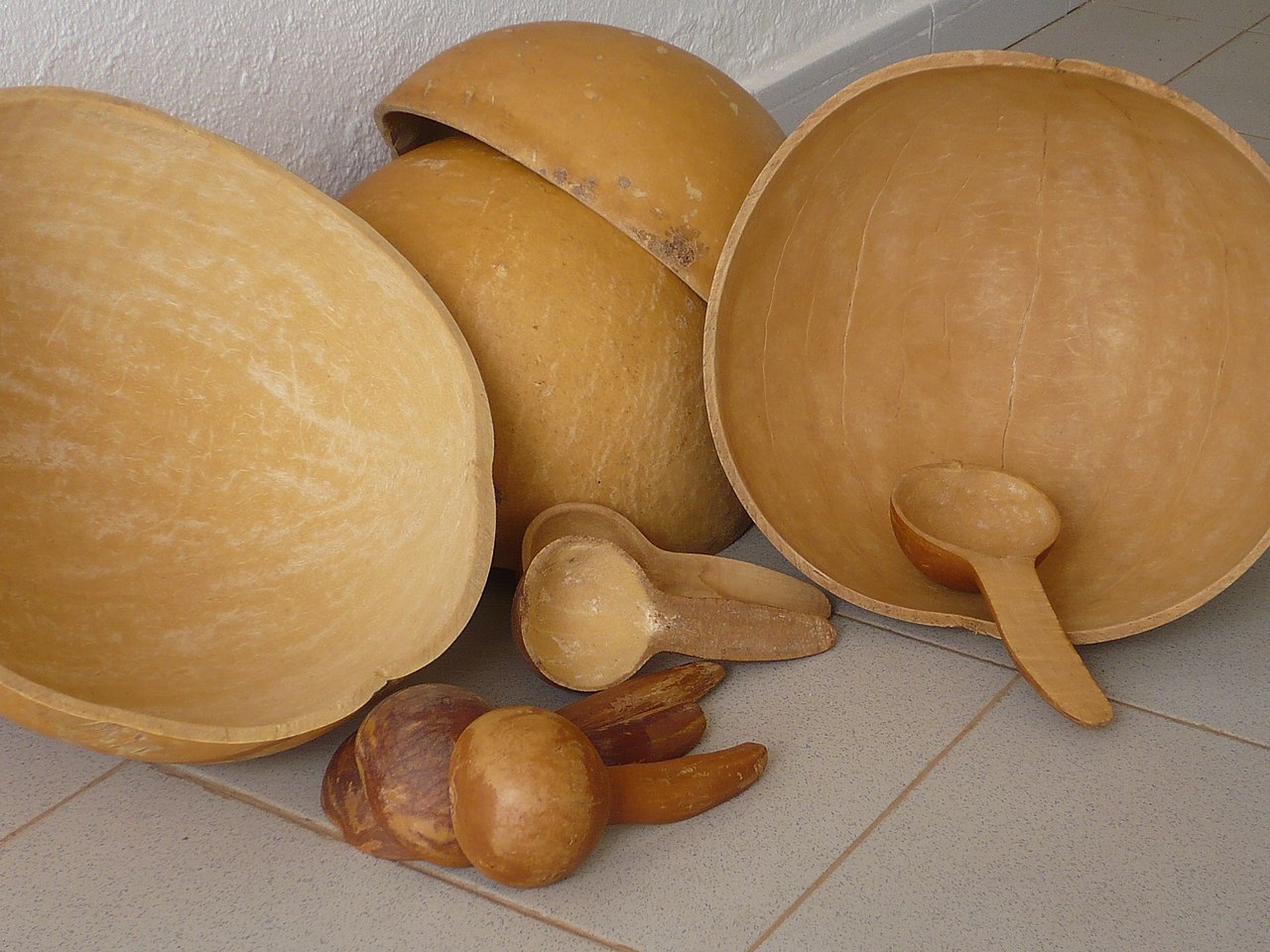
Bowls and Spoons made from the Calabash Fruit – Image Source: https://upload.wikimedia.org/wikipedia/commons/thumb/1/14/2007.10-310-270_Bottle_gourd%2Cbowl%2Cspoon%28frm_Sikasso%29_Bamako%2CML_mon29oct2007-1315h.jpg/1280px-2007.10-310-270_Bottle_gourd%2Cbowl%2Cspoon%28frm_Sikasso%29_Bamako%2CML_mon29oct2007-1315h.jpg
About The Calabash Tree
The Calabash Tree thrives in many parts around the world, Guyana being one of them. Guyanese made use of surrounding resources back in the olden days when plastic, ceramic and metal utensils and wares were an not common thing since only few could have afforded them. Sometimes these Calabash bowls, basins and cups can be found mixing with the normal dishes of a kitchen. Calabash trees also provide us with material to create pieces of artwork. Calabash fruits can even be carved into many beautiful sculptures or made into musical instruments like the maracas. The Calabash tree is volatile and provides us with many ways to unleash our creativity, whether its creating and carving a bowl or using fruits in the making of music and entertainment.
Article References
- https://www.britannica.com/plant/calabash-tree
- http://guyanachronicle.com/2010/10/23/the-versatile-african-calabash-tree
- https://ohbeautifulguyana.wordpress.com/2014/08/14/the-amazing-calabash-of-guyana-by-dmitri-allicock/
- https://guyana.hoop.la/topic/who-remember-the-calabash-tree
- https://guyaneseonline.net/2014/08/14/the-amazing-calabash-of-guyana-by-dmitri-allicock/
- https://plants.jstor.org/stable/10.5555/al.ap.flora.flos003208
- https://www.missouribotanicalgarden.org/PlantFinder/PlantFinderDetails.aspx?taxonid=277886&isprofile=0&
- https://www.fruitsinfo.com/calabash-tree-tropical-fruits.php
- https://rastafari.tv/ras-kitchen-make-calabash-bowls/
- http://www.zerotocruising.com/how-to-make-a-calabash-bowl

